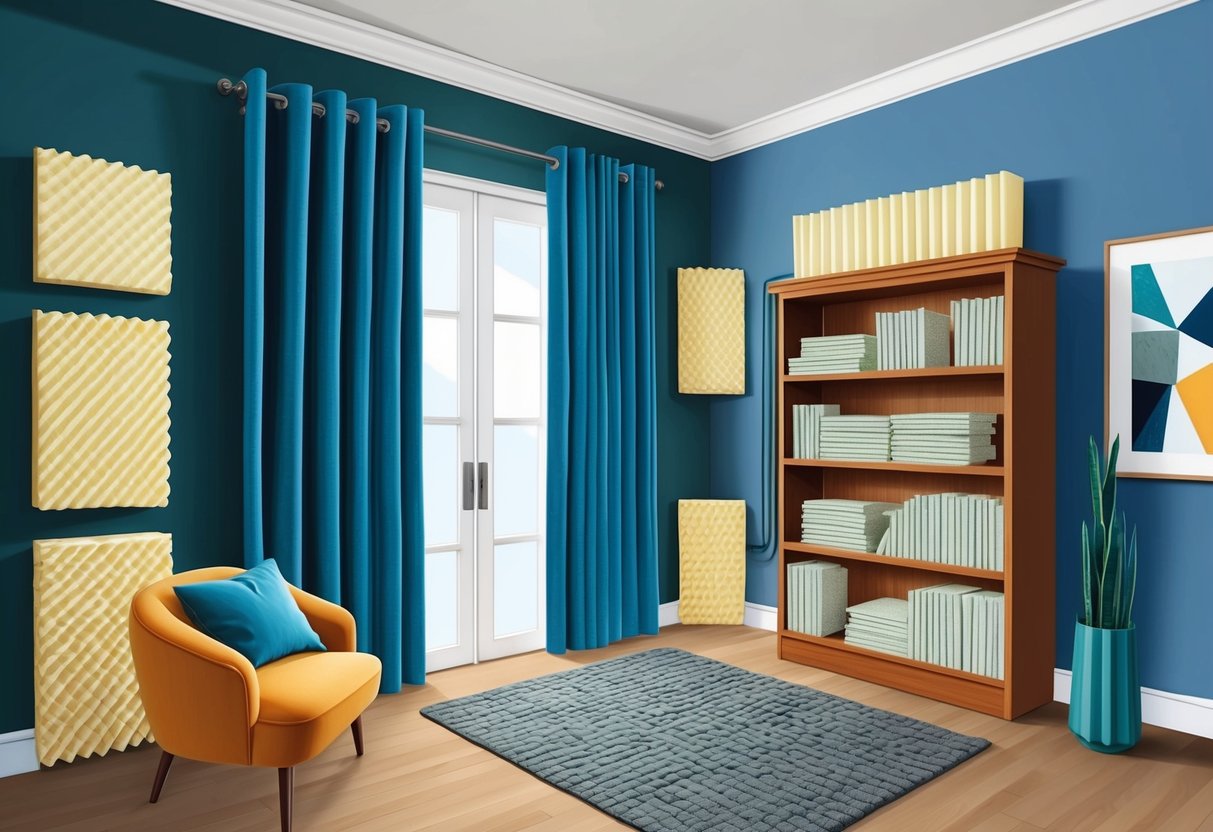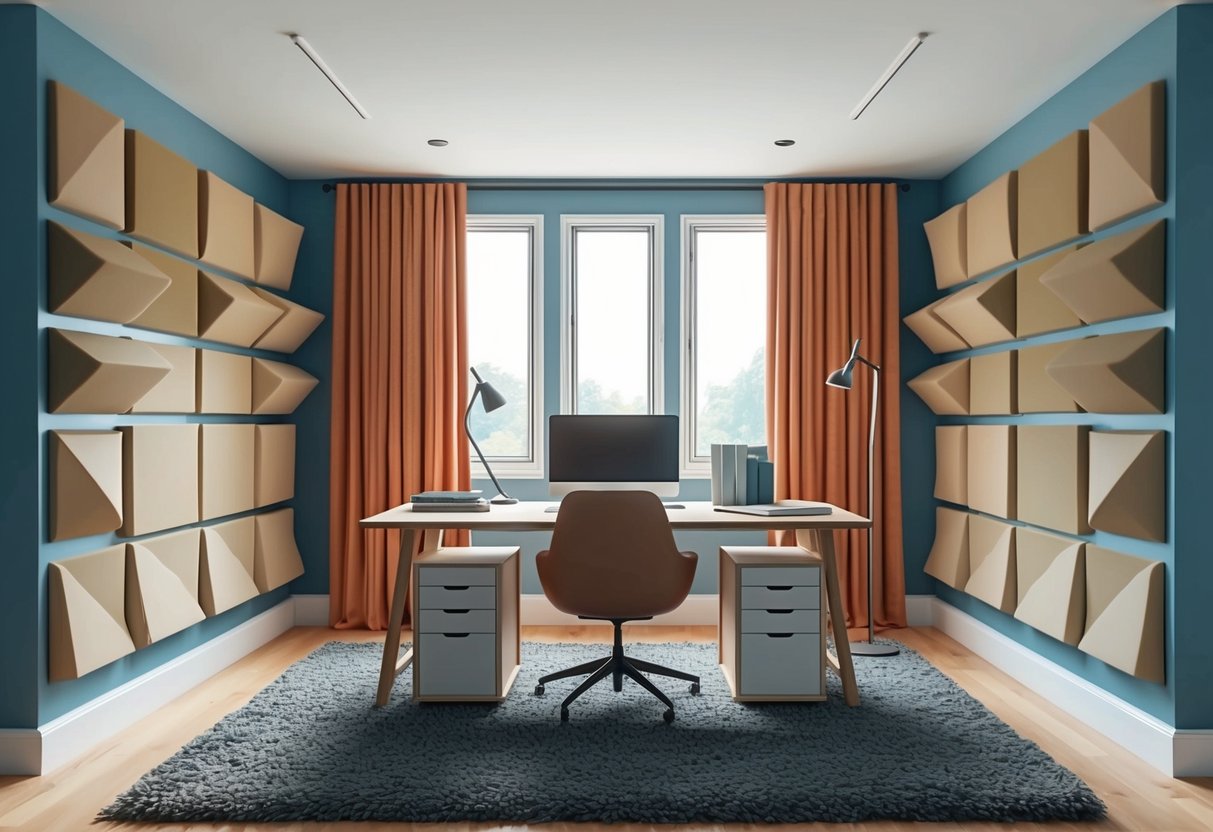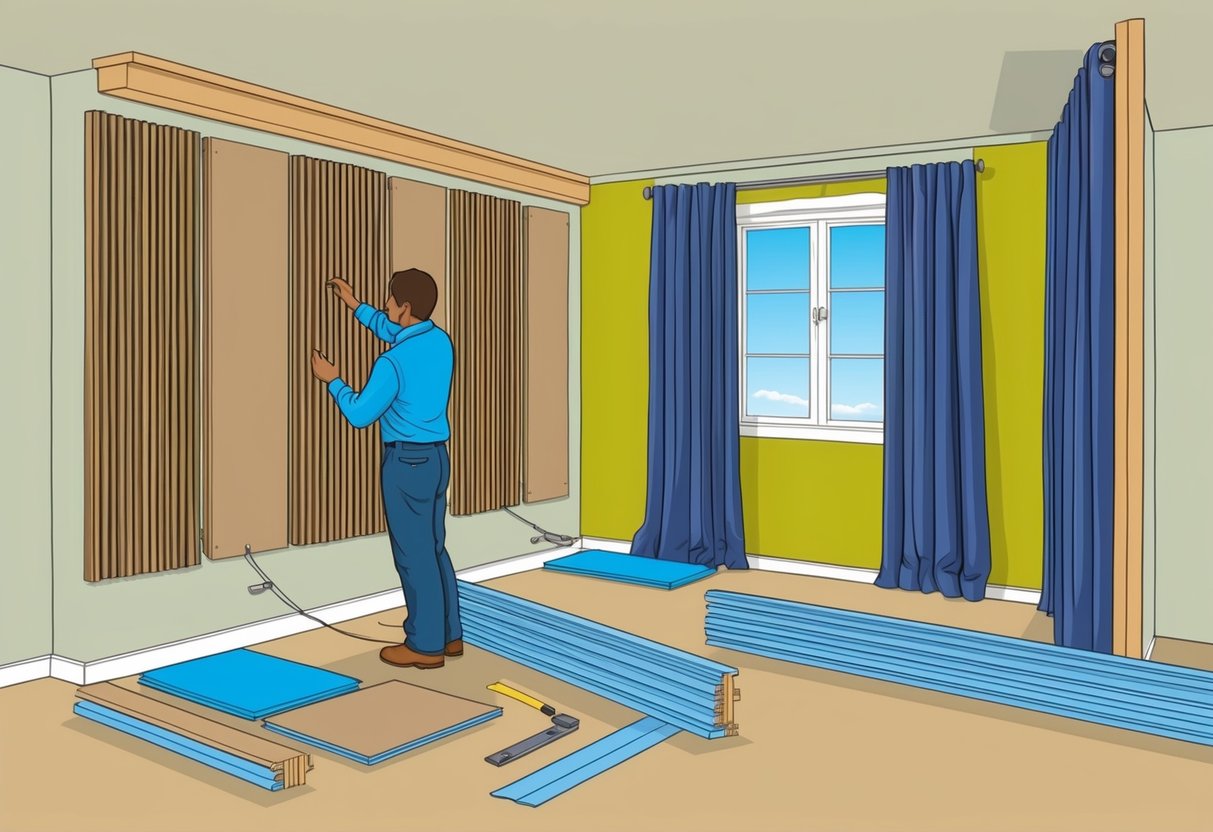
Special Considerations for Home Offices and Studios

Home offices and studios require targeted noise control strategies to ensure sound quality and productivity. Acoustic comfort is especially important in these spaces, whether the need is to block external sound or to limit noise transfer between rooms.
Creating a Quieter Home Office
A well-designed home office focuses on minimizing distractions and improving sound transmission loss through walls, floors, and doors. Simple steps like adding thick rugs or carpet, hanging heavy curtains, and using bookcases as extra insulation can dampen noise effectively.
Draft stoppers or weather stripping can be applied to doors to help seal gaps and stop sound leaks. Selecting the right door is crucial.
Solid core doors provide a much higher Sound Transmission Class (STC) rating than hollow-core models. Acoustic panels or felt wall hangings mounted near work areas further reduce echo and unwanted sound.
Arrange furniture strategically; placing shelves or cabinets against shared walls helps absorb sound. For additional guidance on home soundproofing, see these sound-dampening tips.
Professional Soundproofing for Studios
Effective professional soundproofing in studios involves multiple layers. Insulating walls with dense materials, such as mineral wool or specialized soundproof drywall, boosts their ability to prevent noise transfer.
Floating floors and isolated ceiling systems create a decoupled structure, limiting vibration transmission. Sealing every gap is essential; even small openings for wires or pipes can compromise a soundproof room.
Acoustical sealant should be applied around outlets, windows, and baseboards. Installing double or triple-pane acoustic windows and solid exterior doors with a high STC rating further minimizes outside noise intrusion.
Acoustic panels, bass traps, and diffusers help control reflected sound inside the studio. For step-by-step guidance, see this soundproof basement studio tutorial.
Supplementing with White Noise Machines
White noise machines are effective tools for masking unwanted background sounds in both home offices and studios. These devices generate consistent, non-distracting audio that reduces the perception of variable disruptive noises, making concentration easier.
Many models allow users to select different sound profiles, from classic static noise to nature-inspired soundscapes. Placing multiple machines in larger rooms or along common noise pathways, like near shared walls or doors, enhances their effectiveness.
White noise does not block sound entirely, but when paired with good soundproofing, it improves the overall acoustic environment. For sensitive environments, consider machines with volume control and timer features to suit changing needs throughout the day.
Frequently Asked Questions

Adding mass to walls, sealing gaps, and choosing dense materials are key strategies for blocking and absorbing unwanted noise. Layered construction, acoustic insulation, rugs, and sound-dampening panels play a significant role in creating a quieter living environment.
What are effective methods for soundproofing a room from external noise?
Sealing windows and door gaps with weatherstripping or door sweeps helps prevent outdoor sound from leaking in. Installing thicker curtains and using acoustic panels on shared walls can noticeably reduce exterior noise.
For greater effectiveness, adding a second layer of drywall or mass loaded vinyl provides an additional sound barrier.
What materials can be used to soundproof a room economically?
Thick rugs, heavy curtains, and dense blankets help absorb sound and are cost-effective. Rearranging furniture, like placing bookshelves against walls, also dampens noise.
Affordable options such as acoustic foam panels and door draft stoppers further improve sound reduction without significant investment. More info can be found in sound-dampening hacks like using area rugs and padding the floors stylebyemilyhenderson.com/blog/design-minded-sound-dampening-hacks-to-quiet-the-noises-coming-into-your-home.
How can you insulate a wall to reduce noise from neighboring rooms?
Adding insulation—such as mineral wool or fiberglass—inside the wall cavities significantly reduces sound transfer. Doubling drywall layers or using resilient channels can break up vibration paths, further minimizing noise between rooms.
Acoustic panels or foam tiles attached to wall surfaces also contribute to overall sound dampening.
What are the best ways to prevent sound from traveling between adjacent rooms?
Weatherstripping doors, sealing cracks, and using solid-core doors block airborne noise. Building a “room within a room” structure or adding mass loaded vinyl under flooring are highly effective but more involved.
Placing large furniture like wardrobes against shared walls also dampens sound transmission, as described in sweeten.com/blog/home-renovation-projects/guide-how-soundproof-room.
How can a bedroom be soundproofed to minimize interior noise disruptions?
Carpeting the floor with thick rugs and adding soft furnishings absorb footsteps and other sounds. Heavy blackout curtains both block external noise and help muffle echoes.
Foam panels or upholstered headboards enhance bedroom acoustics while remaining unobtrusive.
What are the strategies for soundproofing a room within an apartment setting?
Placing rugs with thick pads, hanging tapestry or art on walls, and using large furniture creates natural barriers to noise.
Acoustic sealing around doors and windows is important in apartments, where construction modifications might be limited.
Tips for apartment-friendly soundproofing solutions are detailed at thespruce.com/soundproof-your-room-or-apartment-4062945.